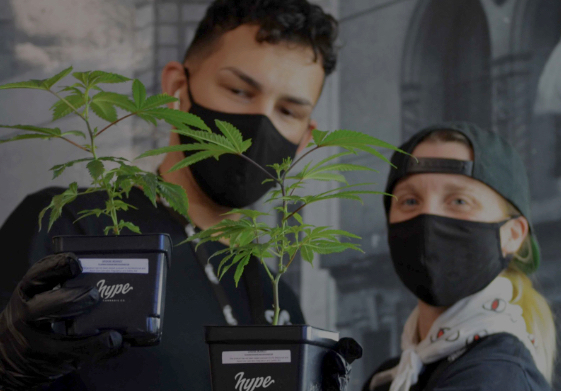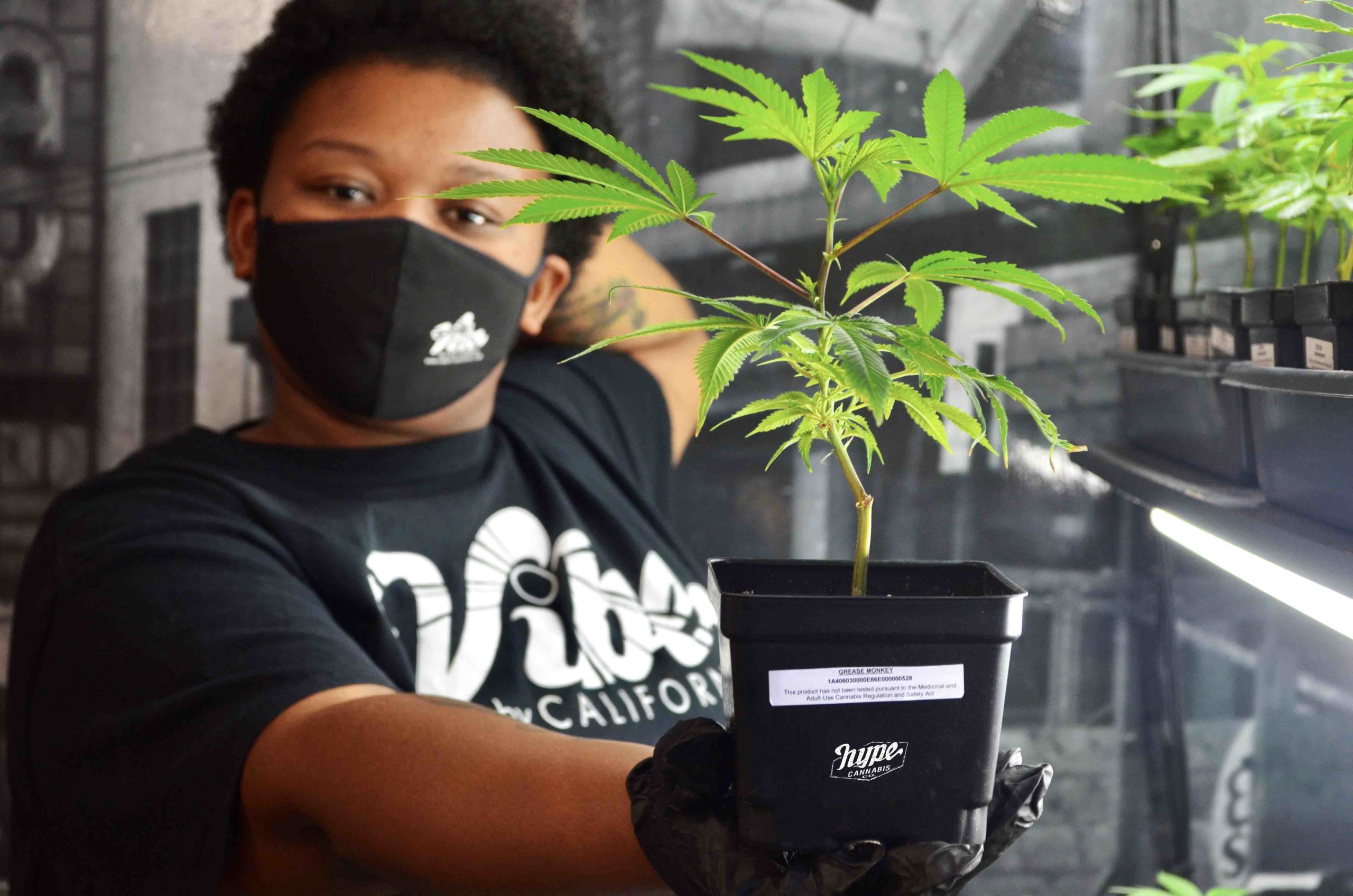Shop Clones, Products, and more!

How to Grow Your Own Cannabis: A guide to growing marijuana
Grow your own cannabis without the worry. This can be simple, fun, and super cost-effective. In fact, it is much simpler than most people think.
When you get down to it, there are 6 main things you need to focus on as a novice pot grower to be successful. Today, we will lay down the tried and true methods you can use to grow your own marijuana.
Table of Contents
- What is the best type of soil for growing weed?
- Feeding/watering your plants
- Light schedules
- Trimming
- Common issues
- Harvesting
What is the best type of soil for growing weed?
The first thing to consider when asking how to grow your own cannabis is what soil you need for growing weed.
The main factors to consider are the moisture levels, the soil texture, the amount of drainage, the PH levels of the soil, and, finally, what base nutrients your plant will feed on.
While we could get really in-depth answering what soil is best for growing cannabis, we will keep it simple here.
Your ideal soil should be nutrient-rich, have good water retention, excellent drainage, good nutrients, and the right PH balance. As a first-time grower, we recommend finding a pre-made soil at your local garden shop with these characteristics. If you prefer, you can make your own.
Make your own cannabis soil
- 1 parts compost (nutrient-dense)
- 1 part Coconut coir (good for moisture retention)
- 1 part Perlite (good for drainage)
- 1 cup worm castings (nutrient-rich, moisture retention)
- ¼ cup (per 5 gallons) of kelp meal
- Worm Castings – up to 20% of total substrate composition
Check the PH balance (which should ideally be between 5.8-6.3) and off you go.
Getting your soil right is the key to growing abundant and delicious buds you will thank yourself for later.
Feeding and Watering your Cannabis Plant
Feeding your plant
Most store-bought soils already have plenty of nutrients to start. However, by the time you have a flowering plant, you will likely need to add nutrients.
Just like any living creature, your cannabis plant needs a variety of micro and macronutrients.
When your plant begins to flower, you may want to consider adding bat guano to the topsoil and watering it in.
Your plant will absorb these nutrients as you water, which is the next key thing to consider.
How often should I water my Cannabis plant?
The most common issues found with novice growers is overwatering. Cannabis is very susceptible to root rot and other root conditions, which affects your plant’s ability to thrive. This is why you need to have soil with good drainage (see how everything ties together?)
The amount of water you use really depends on the soil you use, but many growers will wait until the bottom leaves begin to droop slightly before watering.
The type of water you use is another factor. For best results, use filtered water, as some places have hard water with heavy minerals (which will affect the root’s ability to absorb nutrients) or high chlorine levels, potentially killing off micronutrients over time.
Don’t overwater and notice when your plant is thirsty. With a little time, it should be easy to determine your watering schedule.
Light Cycles of Weed Plants
Your cannabis plant will go through two phases: the vegetative phase and the flowering phase.
The Vegetative Stage
As you grow your plant from seed (or from one of our clones), your plant will be in the vegetative stage (not like the vegetative, “I just smoked way too much Indica, I can’t move” vegetative state). This is the phase where your plant will grow more vegetation, making it taller and bushier.
The vegetative stage is directly linked to the light cycle. When your plan is receiving around 13 hours or more per day, your plant will stay in the vegetative state.
Most growers follow an 18/6 cycle for 6-8 weeks to get their plants as large as possible, meaning they expose their plant to 18 hours of light per day. Some, who want to get massive growth, will even opt for a 24/0 light schedule, depriving their plants entirely of darkness.
As long as your plant is getting over 13 hours of light per day, your plant will stay in the vegetative stage indefinitely, meaning that, when growing indoors with a light set-up, it’s up to you when you want your plant to enter the flowering stage.
The Flowering Stage
The flowering stage begins when your plant begins to receive 12 hours of total darkness. By mimicking the natural light cycles of your plant, you can control when your plant begins to produce those tasty nugs.
Once your plant receives 12 hours a day of darkness, it naturally enters the flowering stage. It’s as simple as that. All you have to do is decrease the amount of light your plant receives, and you are in the business.
Now you might be asking, “How do I control the lighting?”. That is an excellent question.
Common Lighting set-ups for growing Cannabis
The biggest decision (and in some cases, the easiest) is whether you will grow outdoors or indoors.
For many people growing outdoors simply isn’t an option. For others, they want to control the lighting 100% to increase growth during the vegetative stage and increase yield in the flowering stage. For these reasons, people want to learn how to choose the best indoor lighting for cannabis plants.
We are here to help.
Single Light Setup
As a beginner grower growing a small number of plants, we suggest a single light setup. Lighting for growing cannabis is an in-depth topic, but all you need to know is that several factors will influence your light selection.
The first issue is your light footprint, which means how much space your light covers. What this all boils down to is that you need a light that will effectively cover your canopy.
A full spectrum, single light set up is all you need in the beginning to grow awesome marijuana.
The hanging distance of your light is also a factor. Too much light can bleach or burn your plants.
For a full overview of grow lights, check out this article from hydrobuilder.com.
Trimming your Cannabis Plant
The first thing you should do is “top” your plant. Topping is when you cut off new growth from the top part of the main stem. This promotes outward growth, creating that beautiful bushy plant you’re looking for.
As a general rule, top your plant at the fifth node, as this will allow plenty of branches underneath. Cut this at the base of the new growth after the fifth node and you are set for success.
Secondly, as your plant grows, cut off any lower branches that aren’t receiving any light. These branches won’t produce full buds, so don’t feel bad about it. You are simply promoting growth in the areas that will produce more flower. Plants generally prefer that you cut off the branches at about 1/4th inch away from the base at a 45-degree angle.
Then, make sure you trim off any dying leaves, as your plant is wasting energy trying to keep them alive.
Similarly, you can trim any shaded bud sites that aren’t receiving enough light or even branches growing into the canopy that aren’t receiving enough light to thrive.
You can trim your plant up to 3-4 weeks into its flowering cycle, but once your plant is in the flowering cycle, don’t trim any more as this may cause the plant to return to the vegetative stage.
Always use clean, sharp pruning shears to do this work. Think of this as surgery for your plant and avoid causing infections from using dirty tools.
Common Signs of Illness
There are so many signs that your plant may not be healthy, and each one may point to a different cause.
Our friends over at growweedeasy.com have compiled a whole list (with photos) of common issues you may encounter. Read about common cannabis plant illnesses here.
The biggest thing is to look out for are any changes in color, shape, or growth of your plant, as all of these things may indicate an issue.
Curling leaves, odd new growth during the flowering stage, color changes, scaling, mold, pests, and many more signs will let you know there is a problem.
Remember, one of the biggest issues with first-time growers is root rot (and similar issues) related to overwatering.
Harvesting Cannabis
When to harvest your plants is a key issue and, as you have probably guessed, is a lengthy topic as well.
What you need to know can be found on the little white hairs of the buds themselves.
When the trichomes on the buds are clear, the bud is still immature. When they are slightly cloudy, they are ready. When the trichomes have turned amber, the THC has begun to degrade slightly, which will create a more mild effect and may even be what you are looking for.
Keep in mind that the lower buds on the plant will mature slower than the top ones, so consider this and pull out that magnifying glass.
When you have decided it is time to harvest, grab some rubber gloves, some clean sheers, some twine or rope, a bucket to transport the branches, and a good place to hang your weed.
The gloves will help keep the buds from sticking, and will also make it easier to collect the resin to make hash. Similarly, you can collect the resin for hash from your pruning sheers (just make sure the sheers are clean first).
Cut the branches individually from the stalk. Avoid hanging the entire plant as this may not allow for the best drying.
Hang each branch upside down in a cool area with good airflow. If your buds dry too quickly, they will be harsh or even dry outwardly, but moist in the center. If they dry too slowly, they can get moldy, so a spot with good airflow is key.
Once your plants are hanging, trim the big, fanning leaves away from the buds. Doing this now will save you some hassle.
Once your buds are dry, it’s time to up your vibe.
Learning how to grow your own cannabis is not as difficult as it might seem. Please reach out to us with any questions and one of our expert growers will get back to you!
Vibe by California currently operates 3 cannabis cultivation centers throughout California. Cannabis clones and more established “tweens” are available year-round at a Vibe Cannabis Dispensary near by you. Check out the full selection of cannabis clones here to get started with growing your own cannabis.

